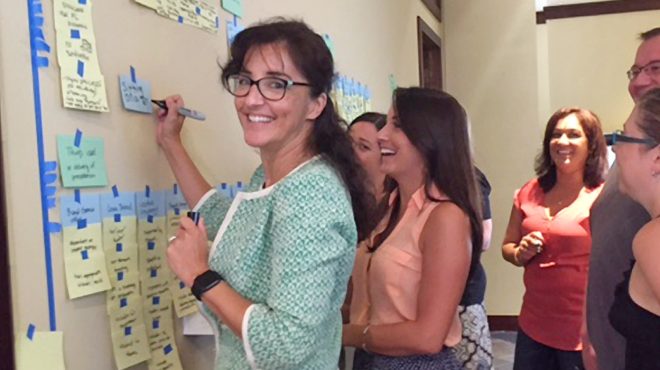Feb 6, 2017
Can your marketing plan be Agile?

Agile | B2B | SFBJ
Reprinted from South Florida Business Journal
While most marketers know that Agile is a methodology and not just an adjective, there aren’t many using it. That also means that, unlike manufacturers and software developers who have used Agile for decades, marketers are losing out on its benefits: fewer mistakes, higher productivity and profits. It’s a scary thought that big marketing and advertising firms might experience a crash similar to the ’80s, when American car makers lost out to the Japanese use of “Agile’s continuous improvement of best practices.”
There are lots of buzz words that have been aligned with Agile, but at its heart it gets your managers’ heads out of their electronic devices and into a room to talk, share information, agree on goals and make a plan with their bosses and their peers. Everyone who talks about the cost of education should appreciate that Agile, because of its verbal and written sharing, promotes maximum use of education, experience and corporate memory of your staff.
Establish a culture of thinking together
This sounds simple. Unfortunately, it is not. First and foremost, as with many corporate changes, Agile only works when it is supported from the top. For most organizations, it requires a culture shift for multiple layers of staff to stand together, talk together, and write and organize thoughts together. There are gaps of understanding of each other’s jobs and roles – which is exactly what working with Agile will solve over time – but at first it seems daunting.
Agile needs to be approached with a high degree of expectation for relearning, changing and internal time. It’s worth hiring consultants and facilitators to help during your first year of attempting Agile. It will also help a great deal if you work with vendors who are already into Agile planning to lend you support.
Because Agile training guides everyone to speak the same language, you will not only reap internal benefits, but also benefits from working with vendors who do. With everyone “speaking Agile,” understanding can be achieved more quickly to save internal time, reduce errors and promote success at a faster rate.
Customize Agile for your business
Smaller firms may have less of a cultural learning curve than larger firms, but there are still “work plans or roadmaps” and staff training on implementation processes that need to be adapted for your particular industry and company. These will require both input and adoption from everyone in your marketing department and select senior managers, according to your business and marketing goals. There is software you can leverage to help. Most require customization for your organization’s workflow, as well as training for all staff members who will use them.
Find books, associations, consultants to help
When your organization is ready to start planning, a good idea is to talk to industry associations that may be able to put you in touch with Agile consultants, vendors and companies in your industry that are using Agile.
Another good thing to do is to Google “Agile marketing books” and read a couple of them. They won’t be perfect for your industry, but they will give you the basics of the process.
One of the first pieces of advice you may hear is to use Agile to plan a project like a website, email campaign or channel promotion before you try to tackle your entire marketing plan. The most important piece of advice is to get started or, if you have tried and given up Agile, try again. In our fast-paced world, being competitive requires using all of the knowledge available from your professional staff, vendors and customers. It is important to embrace new information when you get it and be able to change – to be Agile.
